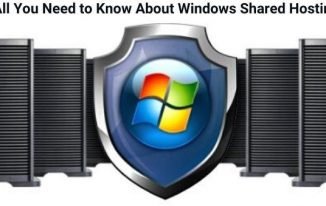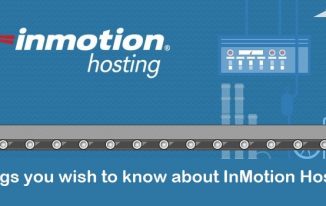This Web Hosting Cheat Sheet helps you pick the right web host and record all the relevant information you need so that you can use the facilities your hosting service provides. In the event that you want to switch hosts, there’s also a checklist to help you seamlessly move from one web host to another.
| Company | Monthly Cost | DH’s Rating | Visit Website |
|---|---|---|---|
| Bluehost | $2.65/Month | 5.0/5.0 | Bluehost.Com |
| Hostgator | $3.00/Month | 5.0/5.0 | Hostgator.Com |
| Ipage | $1.99/Month | 4.9/5/0 | iPage.Com |
| SiteGround | $3.95/Month | 4.9/5.0 | SiteGround.Com |
Coupon Codes – Hosting Deals (Up to 70% OFF)
CHOOSING A WEB HOST
Picking from the plethora of web hosts can be difficult. Here are a few quick tips to help you choose among the different web hosting options:
- Is the web host reputable? Do a web search for the host to find what people are saying about it.
- Is the host’s price reasonable? Some hosts offer a discount in the first year. Check that the price after the first year remains reasonable.
- Does the host offer the facilities you need? Most hosts offer all the basics, but you should check if you have special requirements such as a Windows server, FrontPage extensions, and even daily backups.
- Are the host’s servers located close to your target audience? If the company’s servers are in India but your audience is in North America, your visitors will find pages slow to open.
- What do your friends recommend? Web reviews can be fabricated, but honest reviews from people you know personally are more likely, to be honest, and accurate.
Must More: Checklist to Start A Professional Blog To Make Money Online
RECORD YOUR WEB HOSTING LOGIN DETAILS
Remembering your web server’s IP address and other details can be difficult. Use this quick reference to store all of your web hosting login information in an easily accessible format.
Must Read: SiteGround Real User Review
SERVER
- Your domain name: ___________________
- Your server’s IP address: ___.___.___.___
- Your nameserver records : ____________ (Like ns1.yourdomian.com)
- Your control panel address: ____________
- Your control panel username: _________
Must Read: A Quick Guide On Web Shared Web Hosting
FTP
- Your FTP address: __________________
- Your FTP username: ____________________
- Your FTP port: ______________________
- Your POP3 (mail) server address: _________________
- Your POP3 port: ______________________________
- Your IMAP (mail) server address: _________________
- Your IMAP port: _______________________________
- Your SMTP (outgoing mail) server address: __________________
- Your SMTP port: ______________________________________
SUPPORT
- Your host’s website address: _______________
- Your host’s support website address or e-mail: ____________
- Your host’s support phone number: ___________
- Your host’s billing department phone number: ______________
Must Read: Things To Consider Before Choosing a Web Hosting For Your WebSite
CHECKLIST FOR MOVING TO A NEW WEB SERVER
If you’re planning on moving your website to a new web server, print the following checklists and mark the left column when you have copied those things from the old server; mark the right column when you have restored or uploaded those things to the new server. You should also go through and, line-by-line, mark through any items that do not apply to your site — for instance, mailing lists, parked domains, or add-on domains.
Check This – Blue Host Web Hosting Deal
DOMAIN NAME
| Item | Copied from an old server | Copied to a new server |
|---|---|---|
| Parked domains | O | O |
| Add-on domains | O | O |
| Forwarders and redirects | O | O |
| Subdomains | O | O |
| Subdomains need to be configured correctly prior to moving the data. | O | O |
| Change the nameservers on your domain(s) after the data is moved. | O | O |
WEBSITE
| Item | Copied from an old server | Copied to a new server |
|---|---|---|
| Download all files via FTP and upload them to your new server. | O | O |
| Put a notice on your site saying that there will be some disruption for up to 48 hours. Alternatively, put up a “We are moving” front page. | O | O |
| Re-create password protection on appropriate folders and inform users if the details have changed. | O | O |
| Use phpMyAdmin to download all databases and then re-create them on the new server and upload the data into them. | O | O |
| If the database names, usernames, or passwords have changed, update the configuration files in your website. | O | O |
| If you use an external database manager such as MySQL Workbench, update your logins with the new details. | O | O |
| Reconfigure SSL certificates with new server details. | O | O |
| Item | Copied from an old server | Copied to a new server |
|---|---|---|
| Re-create all e-mail addresses. | O | O |
| Transfer e-mail history, if possible. | O | O |
| Copy across or re-create mailing lists. | O | O |
| Check that MX records match those on the old server. | O | O |
| Re-create mail aliases. | O | O |
| Re-create forwarders. | O | O |
| Switch on server spam filtering and configure it, if necessary. | O | O |
| Re-create auto-responders. | O | O |
MISCELLANEOUS
| Item | Copied from an old server | Copied to a new server |
|---|---|---|
| Re-create all FTP accounts and notify users if details have changed. | O | O |
| Re-create all cron jobs. | O | O |
| Set up a server-based backup facility, if necessary. | O | O |
| Check that SSH access works correctly. | O | O |
| Reinstall FrontPage extensions, if needed. | O | O |




Thank you for the tips! It’s always a daunting task when you need to find a new server.
I think this information is great, and you should put the worksheet portion into a document and use it as an opt-in to collect emails for your email list. 🙂
Having a printable form to fill out so you can find the right host for you would be so so incredibly helpful. 🙂
Thanks for the suggestions Ann!!